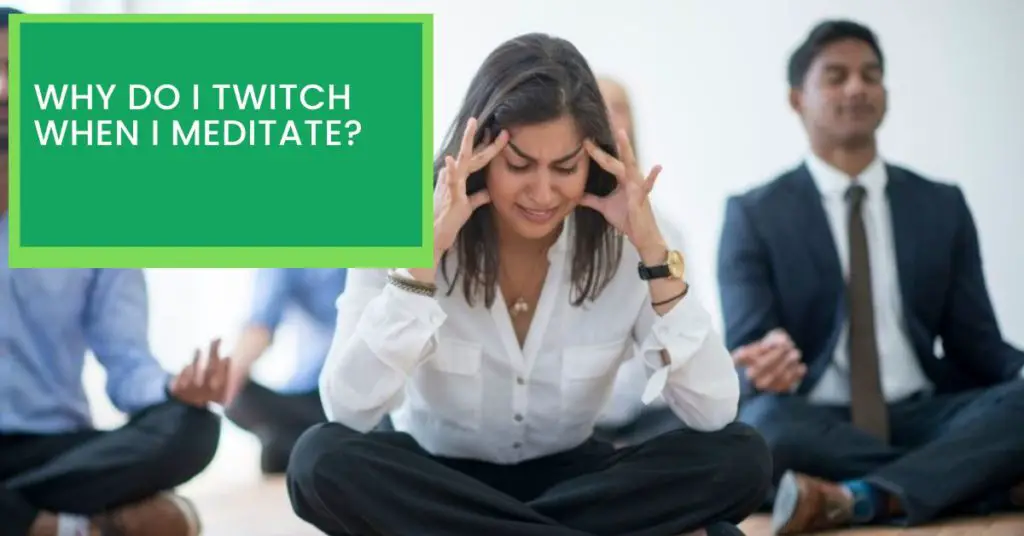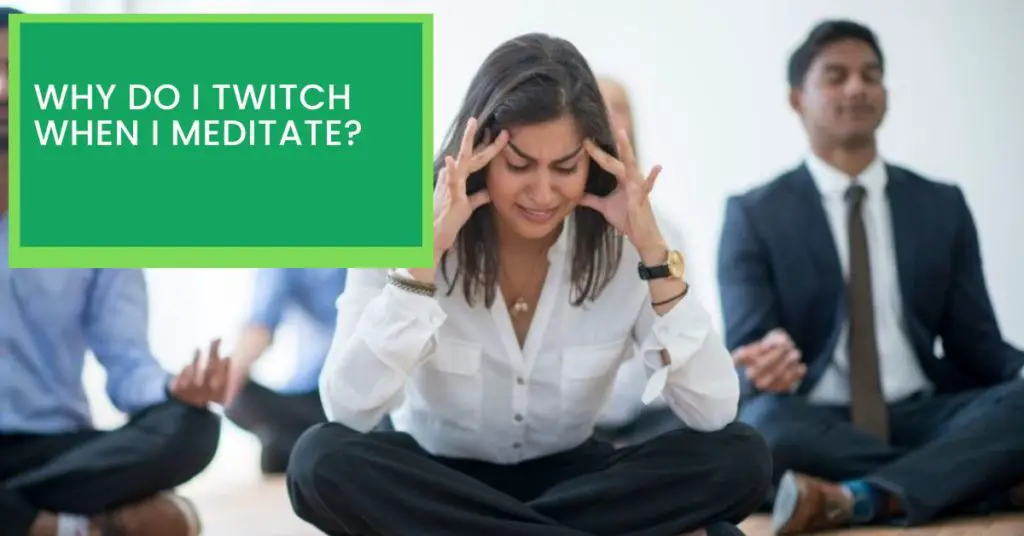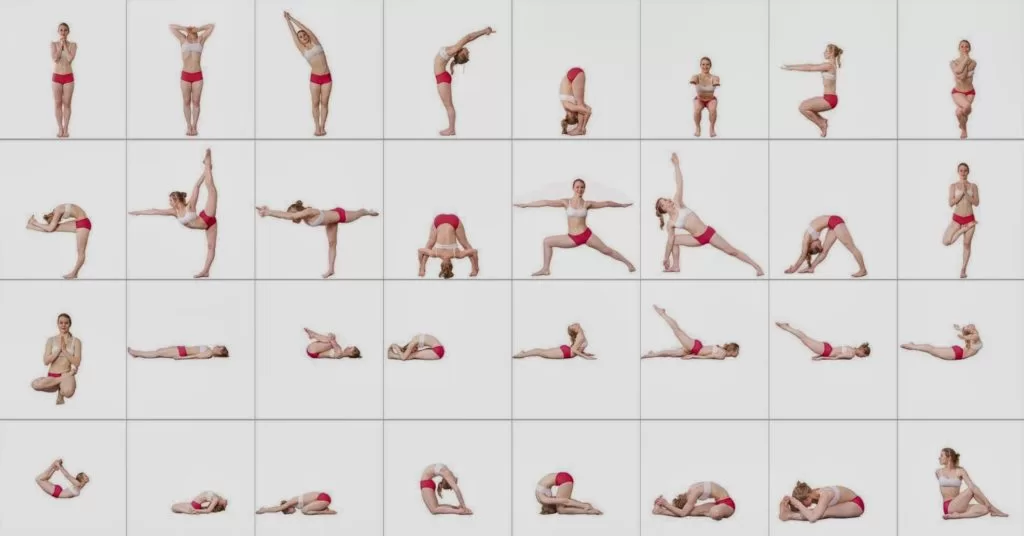
Why Do I Twitch When I Meditate?
Meditation is a practice that has been used for centuries to help individuals achieve a sense of calm and inner peace. It involves sitting still, focusing on the breath, and clearing the mind of all thoughts. However, for some people, the experience of meditation can be quite different. Instead of feeling relaxed and tranquil, they may experience involuntary muscle movements or twitches that can be distracting and even uncomfortable.
If you are one of those people who experiences twitches while meditating, you may be wondering why this happens. Is it a sign that you are doing something wrong? Is there something wrong with your body? In this article, we will explore some of the reasons why you might twitch while meditating and provide some tips on how to overcome this issue so that you can enjoy a more peaceful and fulfilling meditation practice.
Twitching during meditation is a common experience, especially for beginners. It can be caused by stress, anxiety, or simply physical tension. These movements are a natural part of the body’s release process as it relaxes and lets go of tension. If you find yourself twitching during meditation, try to remain calm and continue with the practice. Over time, the twitches will subside as your body becomes more relaxed and accustomed to the practice.

Why Do I Twitch When I Meditate?
Meditation is an ancient practice that has been used for thousands of years to promote relaxation, mindfulness, and inner peace. However, many people experience involuntary muscle twitches or jerks during their meditation practice, which can be distracting and frustrating. If you are one of those people who twitch when you meditate, you may be wondering why this is happening and whether it is normal. In this article, we will explore the possible reasons for meditation twitches and how you can manage them.
What are Meditation Twitches?
Meditation twitches are involuntary muscle movements that occur during meditation practice. These twitches can be small or large and can affect any part of the body, including the face, arms, legs, and torso. They can happen at any time during meditation, but they are most common during the early stages of the practice when the mind is still active and distracted.
There are several possible reasons why you might experience meditation twitches. One explanation is that the twitches are a result of the body releasing tension and stress. When we meditate, we enter a state of deep relaxation, and the body may use this opportunity to release any pent-up tension that has been stored in the muscles. This can result in involuntary twitches or jerks.
Another possible explanation for meditation twitches is that they are a sign that the body is transitioning from a state of wakefulness to a state of rest. When we meditate, we are training the mind to let go of thoughts and distractions and to focus on the present moment. This can cause the body to enter a state of relaxation that is similar to sleep. During this transition, the body may experience muscle twitches or jerks as it adjusts to the new state.
The Benefits of Meditation Twitches
While meditation twitches can be distracting and uncomfortable, they can also be a sign that your meditation practice is working. When you experience twitches, it means that your body is responding to the practice and releasing tension and stress. This can help you to feel more relaxed and at ease, both during and after your meditation practice.
In addition, meditation twitches can be a sign that you are making progress in your meditation practice. When you first start meditating, it can be difficult to quiet the mind and let go of distractions. However, as you continue to practice, you may find that your mind becomes more focused and still. This can result in a deeper state of relaxation, which can lead to more pronounced twitches or jerks.
How to Manage Meditation Twitches
If you are experiencing meditation twitches, there are several things you can do to manage them. First, it is important to remember that twitches are a normal part of the meditation process, and they do not necessarily indicate that anything is wrong. Try to observe the twitches without judgment or attachment and simply allow them to pass.
Another way to manage meditation twitches is to focus on your breath. When you notice a twitch or jerk, take a deep breath and exhale slowly. This can help you to relax and let go of any tension that may be contributing to the twitches.
Finally, if you are experiencing severe or prolonged twitches during your meditation practice, you may want to consider adjusting your posture or taking a break. Sometimes, twitches can be caused by an uncomfortable or strained posture, so it is important to ensure that you are sitting comfortably and with proper alignment.
In conclusion, meditation twitches are a common and normal part of the meditation process. They can be a sign that your body is releasing tension and stress, and they can also be a sign that you are making progress in your meditation practice. By observing the twitches without judgment and focusing on your breath, you can learn to manage them and enjoy the many benefits of meditation.
Frequently Asked Questions
Here are some common questions related to why people may experience twitching during meditation.
Why do I twitch when I meditate?
Experiencing twitching or involuntary muscle movements during meditation is a common occurrence for many people. This can happen due to a variety of reasons, including tension, anxiety, and stress. It can also be a sign that the body is releasing pent-up energy or emotions that have been stored in the muscles.
To reduce or prevent twitching during meditation, it can be helpful to engage in some gentle stretching or yoga beforehand to release any tension in the muscles. It can also be beneficial to start with shorter meditation sessions and gradually increase the length of time as the body becomes more accustomed to the practice.
Is twitching during meditation normal?
Yes, experiencing twitching or involuntary muscle movements during meditation is completely normal and nothing to be concerned about. In fact, it can be a sign that the body is releasing tension and stress, and the mind is becoming more relaxed and focused. It can also be a sign that energy is flowing more freely throughout the body.
If the twitching becomes uncomfortable or distracting, it may be helpful to switch to a different meditation technique or to focus on the breath to help calm the body and mind. It can also be beneficial to speak with a meditation teacher or healthcare provider to address any concerns.
Can twitching during meditation be a sign of a medical condition?
In most cases, twitching during meditation is not a sign of a medical condition and is completely normal. However, in some rare cases, muscle twitches can be a sign of an underlying medical condition, such as a neurological disorder or muscle disease. If the twitching is accompanied by other symptoms, such as weakness, numbness, or tingling, it may be helpful to speak with a healthcare provider to rule out any underlying medical issues.
It is important to note that twitching during meditation is typically not a cause for concern and can be managed through relaxation and breathing techniques.
How can I reduce twitching during meditation?
There are several ways to reduce or prevent twitching during meditation. One effective method is to engage in some gentle stretching or yoga before starting the meditation practice to release any tension in the muscles. It can also be helpful to start with shorter meditation sessions and gradually increase the length of time as the body becomes more accustomed to the practice.
Focusing on the breath can also be helpful in reducing muscle twitches and calming the body and mind. It can be beneficial to speak with a meditation teacher or healthcare provider for additional guidance on managing twitching during meditation.
What are some other common experiences during meditation?
Along with twitching or involuntary muscle movements, there are many other common experiences that people may have during meditation. These can include feelings of relaxation, peace, and calmness, as well as feelings of anxiety, restlessness, or boredom. It is also common to experience wandering thoughts and difficulty staying focused.
These experiences are all a normal part of the meditation practice and can be managed through regular practice and the guidance of a meditation teacher or healthcare provider.
“What Causes a Sudden Jolt In My Body When I’m Meditating?” – Tips for Mindfulness Teachers
In conclusion, twitching during meditation is a common phenomenon that can be attributed to a number of factors. It can be a physical response to the release of tension in the body or a sign of emotional release. It can also be a result of the mind becoming more relaxed, allowing for suppressed emotions to surface.
Regardless of the cause, twitching during meditation should not be a cause for concern. It is simply a sign that the body and mind are working to release tension and achieve a greater level of relaxation. By embracing these sensations and allowing them to pass without judgement, we can deepen our meditation practice and experience greater peace and clarity in our daily lives.

